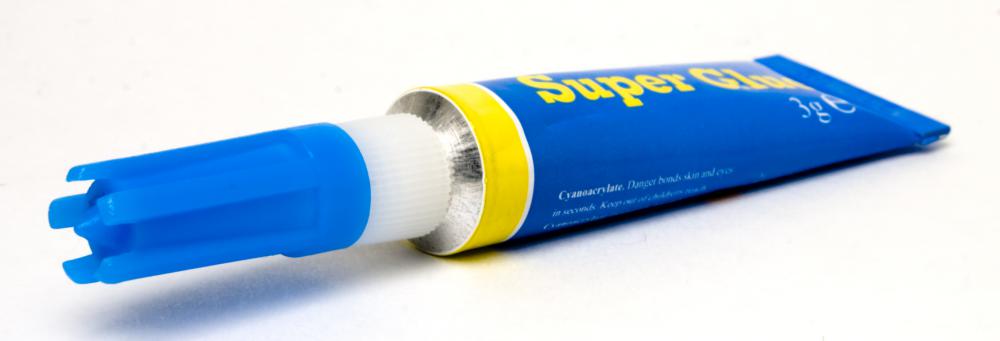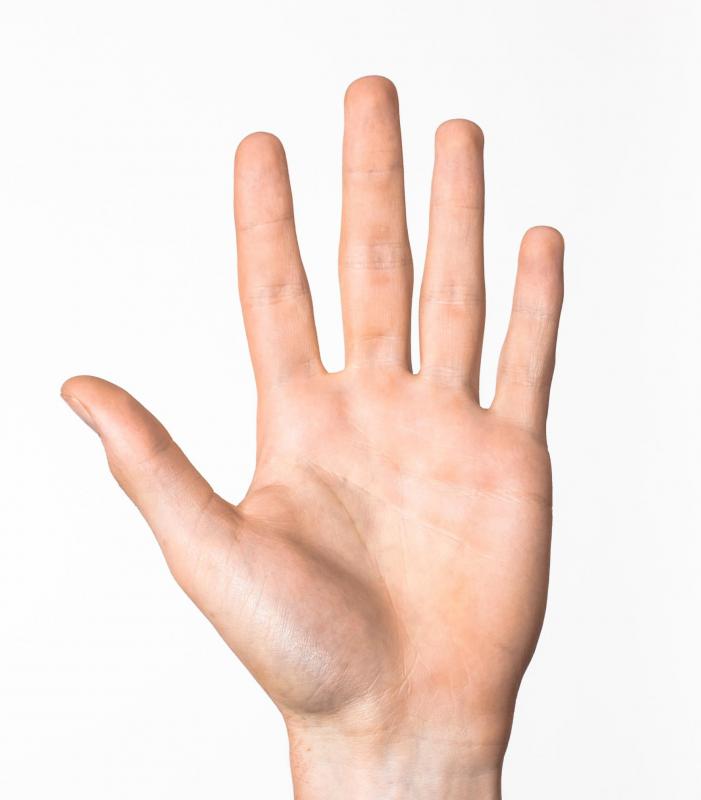At HomeQuestionsAnswered, we're committed to delivering accurate, trustworthy information. Our expert-authored content is rigorously fact-checked and sourced from credible authorities. Discover how we uphold the highest standards in providing you with reliable knowledge.
What is Cyanoacrylate Glue?
Perhaps the term cyanoacrylate glue doesn't sound familiar, but you've probably encountered brand names such as Super Glue, Crazy Glue, Loctite or Insta-Bond. Cyanoacrylate glue is the general term for the quick-bonding super glues used to mend or combine anything from plastics to wood to metal. Unfortunately for some, this list also tends to include human skin.
Cyanoacrylate glue is actually an acrylic resin, not a traditional adhesive in the mold of water-based school glues. Some crafters or automotive repairmen may be familiar with other acrylic resins such as bondo, the clear liquid used to embed small objects. Usually an acrylic resin consists of two separate liquids, one for pouring into the mold and another used sparingly as a hardener. In the case of this type of glue, the hardener is water.

The main ingredient in super glue is called cyanoacrylate. If glue made form cyanoacrylate is placed on a perfectly dry surface or certain plastics, the chemical cannot form a bond with the surface. But if there is even the slightest amount of water present, including moisture from the air, the molecules of the glue have a chemical reaction and form into tight chains between the two surfaces being bonded. This reaction happens within seconds of the water and cyanoacrylate making contact. Traditional white glues rely on evaporation to form their bonds, but cyanoacrylate glue generates its own heat for faster curing.

Some users of this glue may become frustrated by the occasional lack of bonding between materials. This may be caused by a lack of moisture or the non-porous nature of the materials. Applying a thin layer of water or even breathing on the material may create enough moisture for a stronger bonding reaction. Some materials, such as the heat-resistant plastics used in some coffee mugs, cannot be successfully bonded with these glues. An epoxy resin may be required for repairs not achieved with super glue.

Because human skin is naturally moist, full of ridges and very porous, a user of cyanoacrylate glue may find himself an involuntary participant in the bonding process. It is not unusual for super glue users to bond their fingertips together or become stuck to the project. While the effects may seem permanent at the time, most super glue products can be dissolved with acetone (nail polish remover) or even hot water. There are also commercial super glue removers available from leading glue manufacturers. Any residue should wear off naturally as body oils break down the bonds.
Although accidental skin bonding may be an unfortunate event, there are several medical procedures which use this property of cyanoacrylate glue to their advantage. Instead of the commercial super glue formulas, medical glue uses a safer form of alcohol to promote healing and reduce infection. Instead of traditional stitches, some blood vessels and incised tissues are sutured back together with medical super glue. The glue is eventually broken down by the body and the patient has a lower chance of post-op infection. Midwives have also been known to use this glue to repair any torn skin following childbirth.
AS FEATURED ON:
AS FEATURED ON:













Discussion Comments
I'm curious about 'medical glue uses a safer form of alcohol' = perhaps I need to look for a more chemistry oriented article ? recommendation(s) ?
I seem to remember something about super glue use inside the body carrying a cancer risk? That was years ago.
I accidentally inhaled some glue-cyanoacrylate. I feel I have headache plus dizziness. What can I do to alleviate these symptoms?
anon82335 post 6
I am fixing a crack in a Corian countertop. How do I use Cyanoacrylate Glue and color it to match?
What about inhaling the vapors? I've accidentally inhaled some of the vapors of Rhino fix glue and have been having some trouble breathing for over a week but I'm unsure if my continued problems are definitely related to the glue and what I can do to improve my condition?
What are the complications if spilled accidentally into the Eyes and its immediate treatment
sir myself is praveen, studying m.pharmacy. i am doing a project work on mucoadhesive microsphers. some of the research works are done using cyanoacrylate glues for determination of adhesion strength. will you please give me good information about this cyanoacrylate glue? what is the use of this cyanoacrylate glue and why it is using this?
thanking you sir.
The article mentions using CA to bond skin which I've heard of (and done many times by accident). The article also mentions gluing incised tissues and vessels which is interesting. Is there a reference or article that may have more detail? Thx.
Post your comments